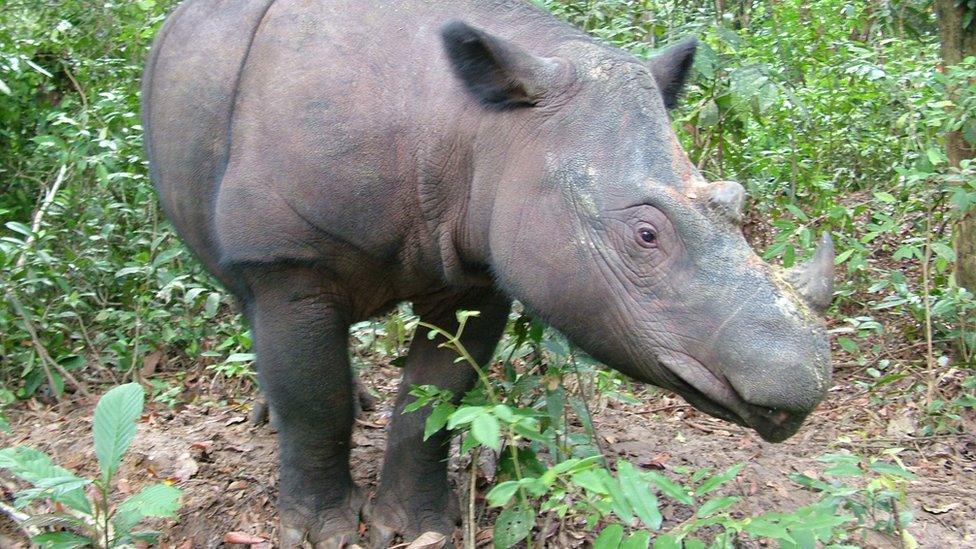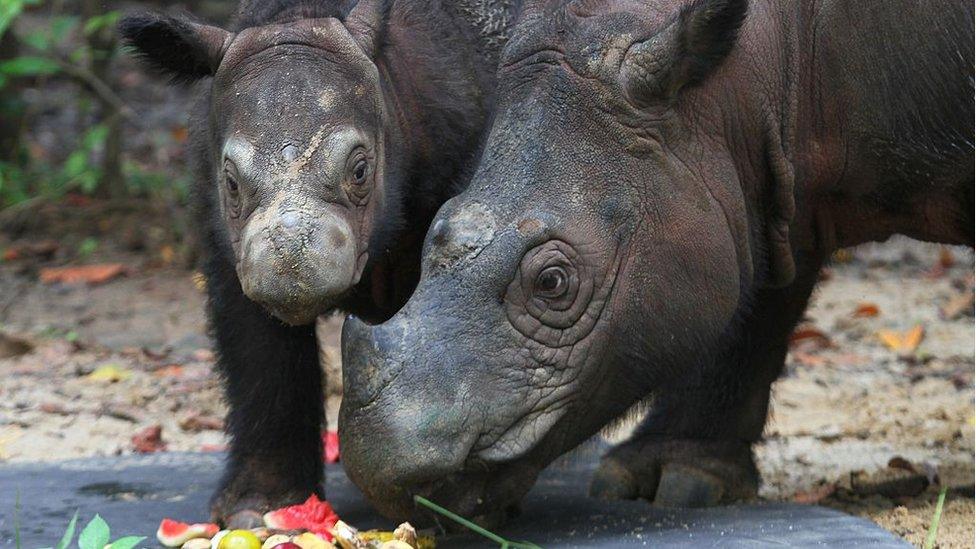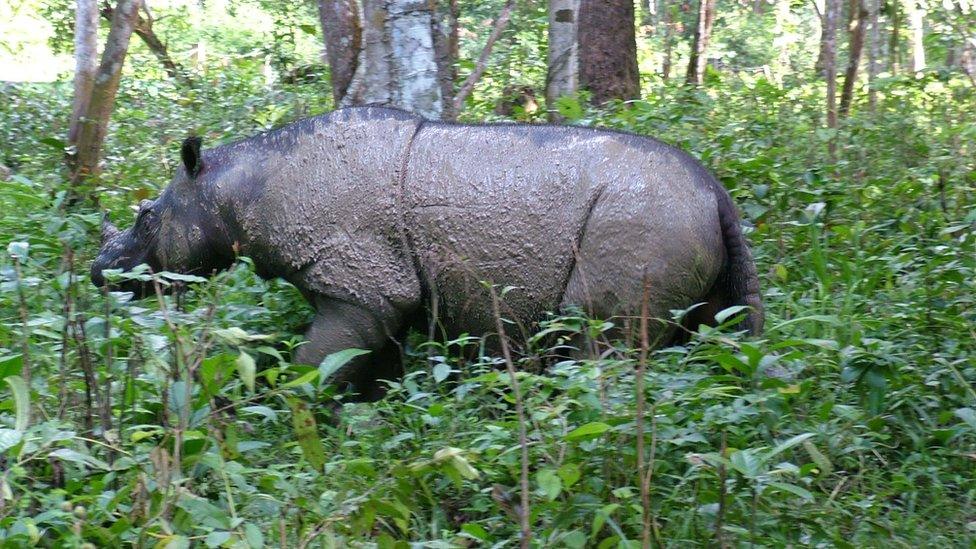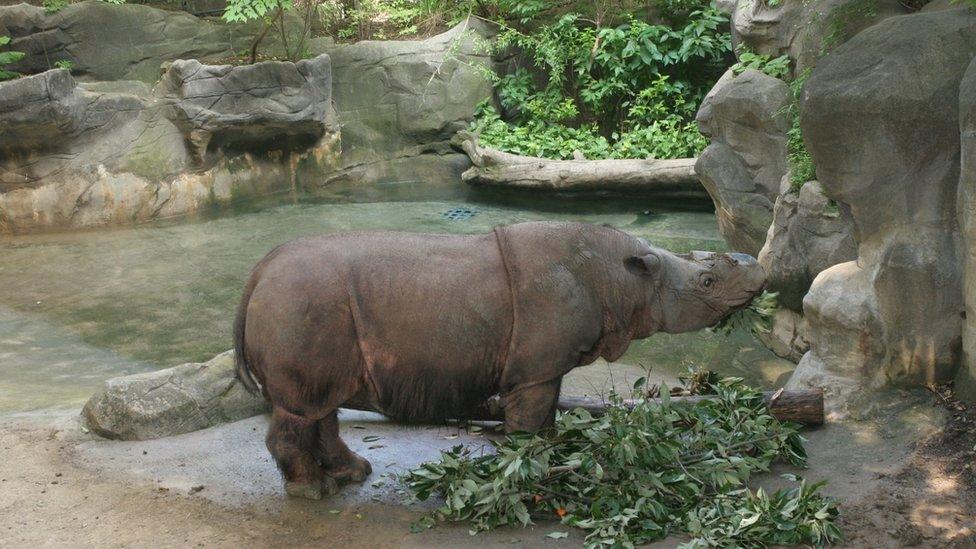Last male Sumatran rhino in Malaysia dies
- Published

The Sumatran rhino is down to fewer than 100 animals, including this female, Rosa
The future of the critically endangered Sumatran rhino has been struck a blow, with the death of Malaysia's last male.
The rhino once roamed across much of Asia, but has now almost disappeared from the wild, with fewer than one hundred animals believed to exist.
The death of Tam, who lived at a wildlife reserve on the island of Borneo, was announced on Monday.
A female called Iman is now the only remaining member of the species in Malaysia.
After decades of deforestation and poaching, it's now thought only 30 to 100 Sumatran rhinos remain in the wild, most on the nearby island of Sumatra.
Tam was aged 30 or more and had been living at a reserve in the Malaysian state of Sabah since being discovered wandering in a palm oil plantation in 2008.
Efforts to breed him with two captured females proved unsuccessful.

Ratu and her calf, Delilah, live at a sanctuary in Indonesia

Facts about the Sumatran rhino
Five rhino species can be found today, two in Africa and three in Asia
The Asian species include the Sumatran rhino, Dicerorhinus sumatrensis, which is the smallest living rhino species
The animal is closely related to the woolly rhinoceros, which became extinct about 10,000 years ago
No more than 100 Sumatran rhinos remain in the wild (some estimates put the number as low as 30), scattered on the islands of Sumatra and Borneo.

Announcing his death, Malaysian officials said Tam was believed to have died of old age, although more would be known following a post mortem.
Cathy Dean, CEO of the London-based charity, Save the Rhino International, said despite the death of Tam, there was still hope that the species could be saved from extinction.
Sumatran rhinos have been hard hit by poaching and habitat loss, but the biggest threat facing the species today is the fragmented nature of their populations.

Rosa is one of the last remaining hopes for the future of the species
"Sumatran rhinos have really suffered from the fragmentation of their habitat," said Cathy Dean.
"With logging, with roads for development, the patches of forest available are shrinking. Frankly it's hard for them to find each other to mate and breed successfully."
Hopes rest on a last-ditch attempt to bring together male and female rhinos, which are naturally solitary animals, for breeding purposes.
Experts believe that as few as 20 unrelated individuals could provide enough genetic diversity to save the species from extinction.
"There are a few animals in captivity in the Sumatran rhino sanctuary, and we're trying to get those to breed as fast as we can," she said.
Shrinking habitat
The Sumatran rhino once roamed from the foothills of the Himalayas in Bhutan and north-eastern India, through southern China, Myanmar, Thailand, Cambodia, Laos, Vietnam and the Malay Peninsula, and onto the islands of Sumatra and Borneo in Indonesia.
The species is now confined mainly to Sumatra and is listed as critically endangered by the International Union for Conservation of Nature - IUCN, external.
The IUCN says over-hunting for its horn and other medicinal products has driven the animal to the brink of extinction.
There are a handful of Sumatran rhinos in captivity, mostly in Indonesia and Malaysia.
Follow Helen on Twitter, external.
- Published15 December 2017
